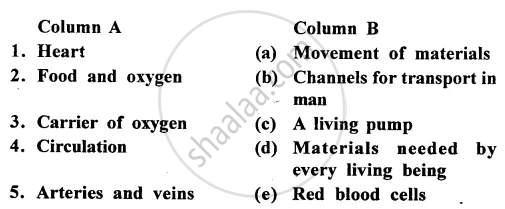Advertisements
Advertisements
प्रश्न
उत्तर
Circulatory system: It is a system of organs that takes part in the flow of materials in the body of an organism inside an extracellular fluid.
Circulatory system in humans:
(a) The right atrium receives deoxygenated blood from all the parts of the body through large veins called vena cava.
(b) When the right atrium is full of blood, it contracts and the blood is forced into right ventricle.
(c) When the right ventricle is full of blood, it contracts and the blood is pumped into the pulmonary trunk.
(d) From right ventricle, the pulmonary artery carries the blood to the lungs for oxygenation.
(e) The oxygenated blood returns to the heart via pulmonary veins that empty into the left auricle.
(f) When the left auricle contracts, the blood passes into the left ventricle by the opening of bicuspid valve.
(g) On contraction of the left ventricle, the blood is pumped into the artery called aorta.
(h) The aorta branches into vessels which transports blood to the heart and all the body parts.
APPEARS IN
संबंधित प्रश्न
Which side of the heart (left or right) contains oxygenated blood?
Match the statements in Column A with those in Column B:

Name the following:
Any one vein which starts from an organ and ends in another organ besides the heart
Given below is a certain structure, write its chief functional activity.
Bone marrow - ______.
Multiple choice questions. Tick ( ✓ ) the correct choice:
Human heart has
Differentiate between:
Arteries and Veins.
Mention, if the following statement is True or False. If false rewrite the wrong statement in its correct form:
Leucocytes show amoeboid movement.
Which of the following is a major part of the plasma?
A resting person usually has a pulse rate between 72 to 80 beats per minute.
Name the following:
The structure that holds the heart valves in position.
